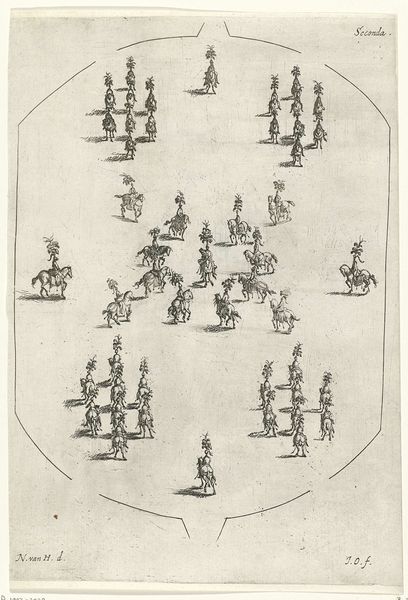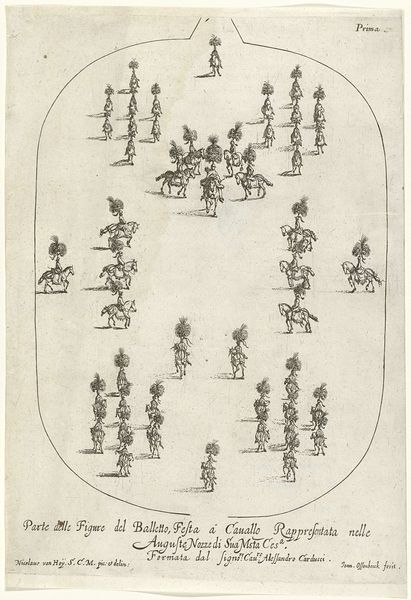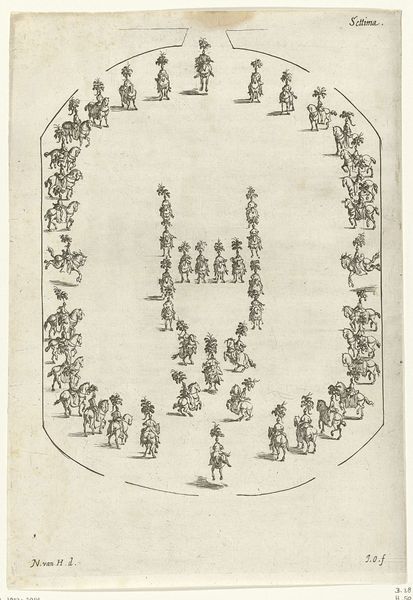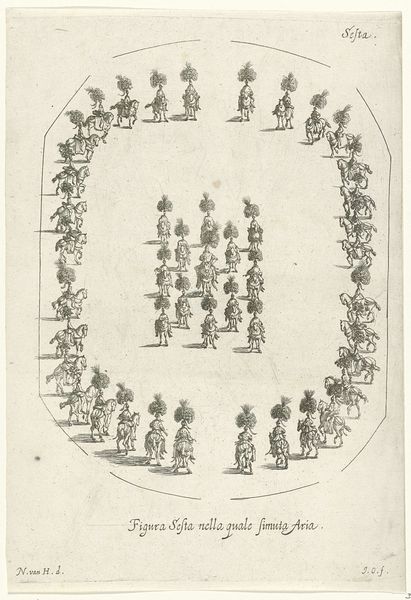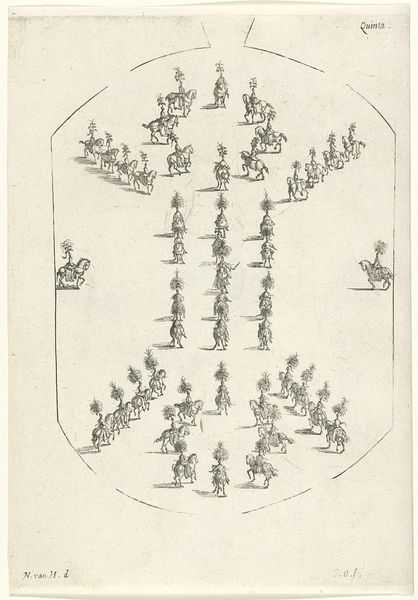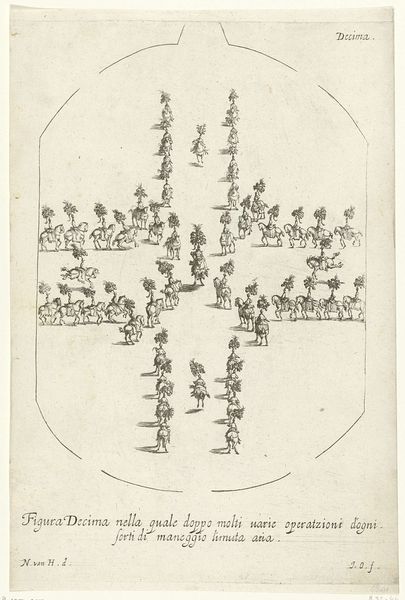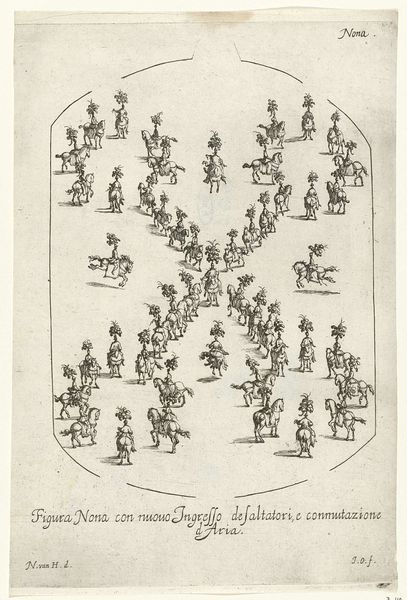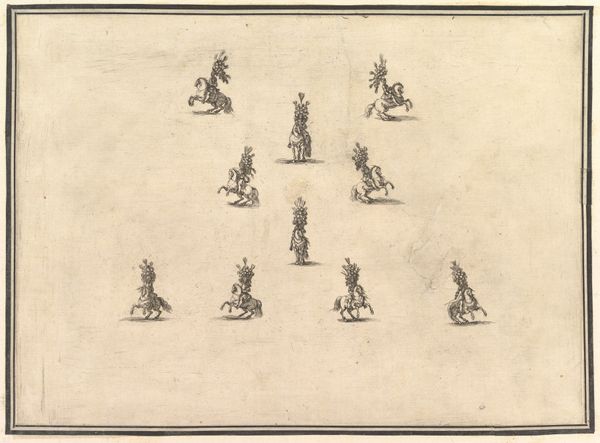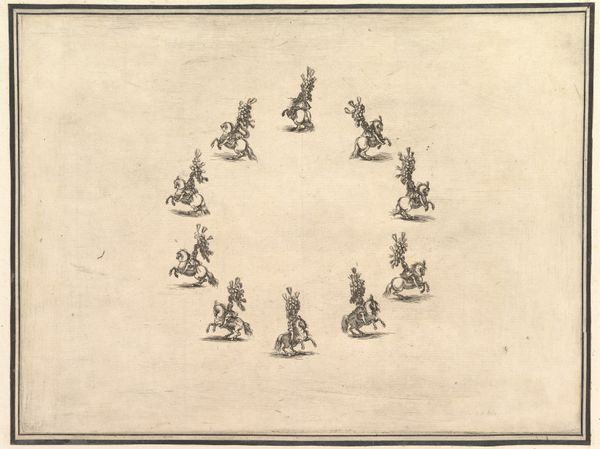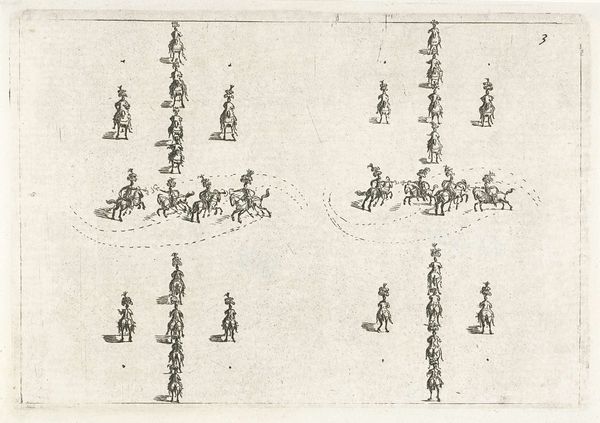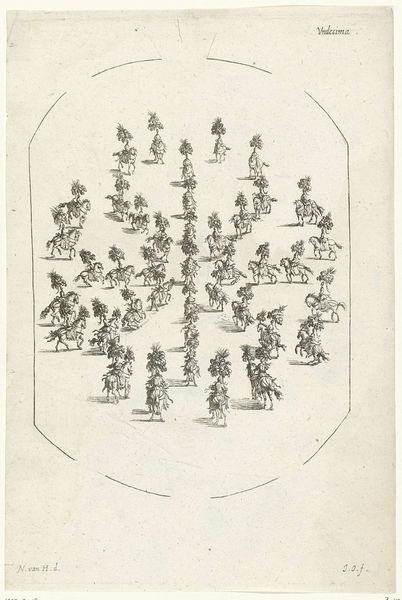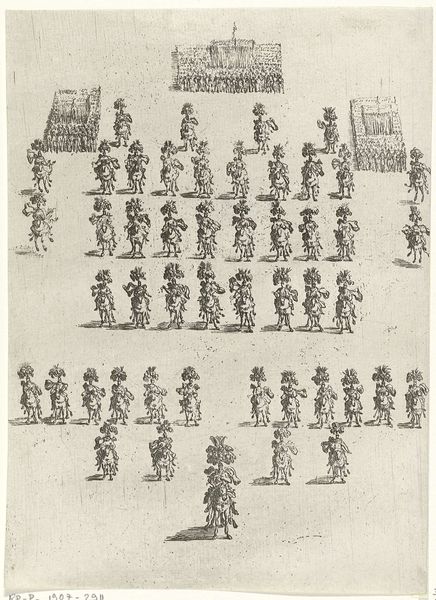
drawing, print, etching, ink, engraving
#
drawing
#
baroque
# print
#
pen sketch
#
etching
#
old engraving style
#
landscape
#
figuration
#
ink
#
line
#
engraving
Dimensions: height 273 mm, width 190 mm
Copyright: Rijks Museum: Open Domain
Curator: Here we have "Ruiterformaties (Terza)" by Jan van Ossenbeeck, dating back to 1667. It’s rendered in etching, engraving, and ink – a fascinating blend of techniques. Editor: It's like a meticulously arranged military parade or a complex dance choreography sketched out on paper. There's such a precise, almost regimented quality to the forms. Curator: Indeed. Ossenbeeck was known for his depictions of military exercises, often linked to the rise of Dutch power. This print likely captures the highly ritualized displays of equestrian skill prevalent at the time, almost propagandistic in their presentation of order and control. Editor: It also shows us a detailed and specific look at the material culture of the 17th-century military, from the horseshoes and bridles, to the plumes on the soldiers’ helmets. Consider how much labor went into making not only the artwork, but also those material goods for the army depicted. Curator: And the print itself would have served a function – circulating ideas about military prowess and potentially influencing artistic representations of power. We shouldn't forget the influence prints have on public opinion and perception. Editor: Thinking about the materials, etching and engraving were both labor-intensive. Creating the plate and making the ink required time, skill, and resources. Who owned these prints, and what sort of socio-economic context dictated access to images like this? Curator: Good questions. Certainly, such images would have circulated amongst the elite, reinforcing notions of order and hierarchy, of noble control. But printed images also served pedagogical purposes, influencing younger generations and creating visual grammars of acceptable representation. Editor: Ultimately, this piece provides us with more than just a scene of historical military exercise; it provides evidence of material processes, labor practices, and economic stratifications alive in Dutch society. Curator: A reminder of the interconnectedness between artistic production, material resources, and societal ideologies. Editor: Yes, and I appreciate having my assumptions of seemingly ‘high’ art challenged and connected to everyday processes.
Comments
No comments
Be the first to comment and join the conversation on the ultimate creative platform.

